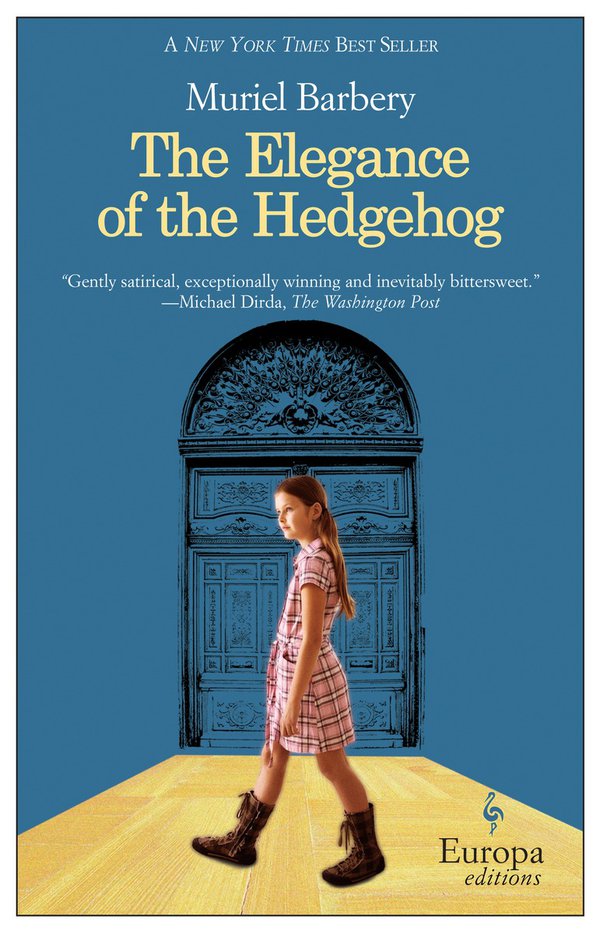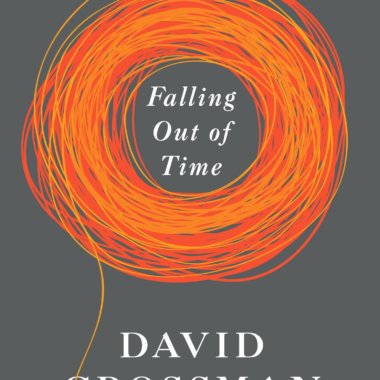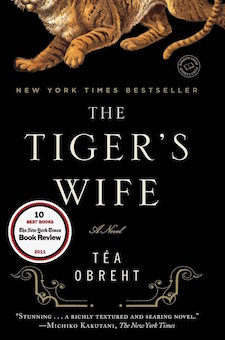On the face of it, Muriel Barbery’s international bestseller, The Elegance of the Hedgehog, is a sentimental tale about a fifty-four-year-old woman who pretends to be illiterate and inept but is actually intellectually gifted and a covert autodidact. As the concierge at number 7 rue de Grenelle, an elite Parisian hotel with a courtyard and a garden, Renee Michel attends to the demands of its very rich and educated tenants: A Parliamentarian and a former minister, a lawyer, an industrialist, a Ph.D., a food reviewer.
Renee befriends twelve-year-old Paloma Josse, who lives with her Maman and Papa and annoying sister Colombe on the fifth floor. When Monsieur Kakuro Ozu, who is also very rich and quite Japanese, moves into the vacant fourth floor apartment, he intuits that Renee is not what she appears to be, and he asks Paloma to help him discover the real Renee.
We get to know Renee and Paloma through their journals, and as subjective as these journals must be, they are, nevertheless, revelatory of the deeper meanings of the novel. In the opening pages, we hear Renee’s voice, and in alternate chapters, we read about Paloma’s ruminations in either of her two journals, “Profound Thoughts” or “Movements of the World.”
We learn that Renee is “short, ugly, and plump”; had an impoverished childhood; left school at twelve years old to work in the fields with her family; and was married at seventeen. She was “the child of nothing, I had neither beauty nor charm, neither past nor ambition,” and the only thing she wanted was “to be left alone.”
Renee Michel is, however, so much more than this initial picture she presents in her journal. She devours literature, art, music, and film: Proust, The Book of Tea, and especially Tolstoy; Dutch painters, especially Pieter Claesz; Mahler and Mozart, especially The Requiem; and Yasujiro Ozu, the Japanese master, whose film The Munekata Sisters she has seen many times. She watches this film and experiences the beauty of art in its most profound sense. Its images—“the camellia against the moss of the temple, the violet hues of the Kyoto mountains, a blue porcelain cup—this sudden flowering of pure beauty at the heart of ephemeral passion”—represent, for her, “the contemplation of eternity within the very movement of life.”
Of Paloma we learn that she is super smart but scales back her performance at school; prefers tea to coffee and manga to newspapers; and abhors living in a four-thousand-square-foot apartment, a reminder every day of how rich her family is. She is an avid player of “Go,” the Japanese game, because you can get ahead “without crushing the other player.” She detests her life, however, and vows she will not end up in the “goldfish bowl” as her parents have. Therefore, she, Paloma, at the ripe age of twelve-and-a-half years, decides to commit suicide and burn her apartment down (when no one is there) on June 16th, her thirteenth birthday. During the next six months, she will climb her own Mt. Everest and pursue intellectual endeavors in her two journals.
You could summarize the story line like this: A dignified, kindly, older, and very wealthy Japanese man named Kakuro Ozu, a distant cousin of the film director, befriends a lower class loner concierge who despises not only her very rich tenants but also her own position in life, and a twelve-year-old despondent girl who decides to kill herself because her life is meaningless and she sees no reason to grow any older. He insinuates himself in a kind and gentle manner and saves them from themselves. He thus gives them reason to live: For Renee to reveal her intellectual gifts, and for Poloma to “construct” her life from the inside out.
However, Babery designs a much richer texture than this simplified version would suggest. Not only does Barbery weave layer upon layer of meaning into the story through the three main characters—Renee, Paloma, and Kakuro—but she also challenges you, the reader, to think, to reflect, to judge, and to examine your own philosophical orientation.
How does Barbery challenge the reader? The word “hedgehog” in the title of the novel indicates that perhaps Isaiah Berlin’s famous essay, The Hedgehog and the Fox, An Essay on Tolstoy’s View of History, gives us a clue as to what Barbery is up to. In his essay, Berlin, the British philosopher and historian of ideas, distinguishes between two opposing kinds of intellectual views of the world. He takes the Greek poet Archilous’ statement (7th CBCE), “The fox knows many things, but the hedgehog knows one big thing,” as his starting point. Berlin examines Tolstoy’s novel War and Peace, and he concludes that Tolstoy was a fox wanting to be a hedgehog. Berlin writes that the hedgehog (Plato) seeks to relate everything to a single vision, or one system, or one universal organizing principle, whereas the fox (Shakespeare) sees in life possibilities to experience in all of life’s complexities. Is there one truth or are there many truths? Is there a singular way or a multiplicity of ways to live? Universalism or pluralism?
When Paloma and Kakuro are coincidentally stuck in an elevator between the second and third floors, Kakuro asks her about her Japanese studies, and Paloma answers in Japanese. He tells her he is very intrigued by the concierge Madame Michel and would like Paloma’s opinion because he suspects “…that she’s not what we think.” Paloma has been thinking much the same thing, that Madame Michel goes out of her way to act stupid but “radiates intelligence.” She has written in her journal: “Madame Michel has the elegance of the hedgehog: on the outside, she’s covered in quills, a real fortress, but my gut feeling is that on the inside, she has the same simple refinement as the hedgehog: a deceptively indolent little creature, fiercely solitary—and terribly elegant.” Paloma tells Kakuro she believes he is right, and they become co-conspirators in cracking the mask of the apparently illiterate, indigent, and inept concierge.
Whereas Berlin uses the metaphor of the hedgehog and the fox to illustrate and explain his thesis of two opposing kinds of intellectual views, Paloma compares Renee’s behavior to the actual hedgehog, an animal that uses its quills to protect itself from predators, rolls up into a ball when it’s attacked, and sleeps during the day under bushes or rocks or hides in holes in the ground. On the outside, Renee appears to be like the hedgehog that protects itself, but she is also like the philosopher intellectual who hews to the universal truths she discovers in literature, art, music and film. She is a cultured aesthete who dissects the phenomenologist Husserl, devours Tolstoy’s novels, and asks the great questions: What is the purpose of art? Where does beauty come from? How should we live? What do we feel in the moment of death? In her journal she discusses what “consonance” means to her: “…esthetics are really nothing more than an initiation to the Way of Consonance, a sort of Way of the Samurai applied to the intuition of authentic forms. We all have a knowledge of harmony, anchored deep within.” After viewing a still life by the Dutch painter Pieter Claesz in Kakruo’s apartment, she writes: “”What congruence links a Claesz, a Raphael, a Rubens, and a Hopper? We need not search, our eye locates the form that will elicit a feeling of consonance, the one particular thing in which everyone can find the very essence of beauty, without variations or reservations, context or effort.” For her, Claesz’ still life achieves “the universal in the singular: the timeless nature of the consonant form.”
Renee is preoccupied with the relationship between the universal and the singular. When Colombe’s Master Thesis is delivered to her door, she opens it and reads it, reflecting on the question that William of Ockham spent his life thinking about: “Do universals exist, or only singular things?” And Renee answers: “Every painting by a Dutch master is an incarnation of Beauty, a dazzling apparition that we can only contemplate through the singular, but that opens a tiny window onto eternity and timelessness of a sublime form.
“Eternity: for all its invisibility, we gaze at it.”
When Kakuro invites her to dine in his apartment, an invitation no other tenant has offered, she observes, in her journal, that Kakuro “combines a sort of childish enthusiasm and candor with the attentiveness and the kindliness of an old sage.” He is eager, lucid, and magnanimous. She trusts him and feels that she can open up her soul to him and share “the things that constitute the tiny portion of meaning and emotion that my incongruous existence has stolen from the universe.” Renee needs coherence and consonance in her mind to survive the humiliations she suffers as a lowly concierge, but more significantly, she carries the burden of a wound that she suffered as a child, one that continues to get in the way of her experiencing the world and all of the multiplicities and complexities the world offers—a world in which Kakuro is at ease.
She is the “hedgehog” Berlin describes in his essay, a woman who lives her life around an organizing principle, a principle that makes her life worth living.
For Paloma, the chance encounter with Kakuro in the elevator is significant. She slowly retreats from her vow to kill herself and tentatively looks toward the future. He is the first person she has met that actually sees her, who “seeks out people and who sees beyond.” In her journal she describes the importance of this recognition: “We never look beyond our assumptions and, what’s worse, we have given up trying to meet others; we just meet ourselves. We don’t recognize each other because other people have become our permanent mirrors.“ Of Renee she writes, “…and when people walk by the concierge, all they see is a void, because she is not from their world.” Kakuro signals to Paloma that he identifies her in her difference and specificity, and she learns from Kakuro “to see beyond myself and truly meet someone.” This deep recognition between persons is a moral imperative in human relationships.
Both Paloma and Renee experience this “watchful gaze,” not only from Kakuro, but also in relationship with each other. When Colombe sends her sister to Renee’s apartment to pick up her Master’s Thesis (the one Renee has already opened and read), Paloma appeals to Renee to invite her into her apartment so that she might enjoy some peace from the chaos in her own apartment. Paloma asks Renee if she believes life has meaning and if it does, where do you find it. Like Renee, Paloma needs consonance to live because, as she admits in her journal, she is “hypersensitive to anything that is dissonant.” Given Paloma’s desire to find an authentic identity, she becomes a good candidate to reconcile her hedgehog with the fox.
It is in Renee’s apartment that Paloma discovers the true Renee. The trust that develops between this fifty-four-year-old woman and this twelve-year-old child surprises both of them. Renee breaks down in tears when she tells Paloma that her older sister Lisette, having left home when Renee was young, arrived one day in the rain pregnant by a rich man’s son. She died giving birth and the infant died three hours later. Renee was too young to understand that Lisette’s death was not her fault, that she was not the cause of it. Traumatized, Renee hid from the world. She perceived her sister’s death as a warning: “…like her I was doomed to a similar punishment if I ever sought to make good use of my mind in defiance of my class. Finally, as I could not cease to be who I was, either, it became clear to me that my path would be one of secrecy: I had to keep silent about who I was, and never mix with that other world.
“From being silent, I then became clandestine.”
Upon revealing this wound to Paloma, she realizes her world—“my invisible little niche”—has been mingled with the world of this rich twelve-year-old prodigy. Renee weeps “great warm tears while a little girl with an incredibly warm gaze is holding my hand, gently caressing my knuckles. And I also realize that I have said it all, told her everything.” Renee believes that the friendship she has found with this child is what life is all about, and Paloma declares that Renee has given her hope again.
At the end of the novel, Renee and Kakuro dine at an upscale Parisian restaurant that offers superb Japanese cuisine. At this fancy place, Kakuro indicates that Paloma has betrayed her, that he knows about her sister’s death. He presses her to recognize and accept that “you are not your sister, we can be friends. We can be anything we want to be.” Kakuro’s knowledge about her childhood wound unnerves her completely, and she weeps uncontrollably, “while all around us the world is fading, leaving nothing to the senses beyond the gaze of this man in whose company I feel like somebody, and who has taken me gently by the hand and is smiling at me with all the warmth in the world.”
Monsieur Kakuro Ozu has introduced this concierge hedgehog to the world of the fox.
Note: What to make of the ending? It came as a surprise to me, considering that Barbery convinces me that these characters are not just mouthpieces for her philosophical disquisitions but are truly alive in all of their emotional complexities. This is a heartwarming story and a delight to read because it makes you think about beauty and truth and art, and yes, whether you are a fox or a hedgehog—or maybe even both.




3 comments
A very, very wonderful review– full of everything and more. I appreciate the depth of your review and also all the details. By coincidence, I read ABOUT this book in another book, which i now want to refer to you; have you heard of it? “The Little Paris Bookshop” by Nina George. I found it on a crowded shelf in Costco and was pulled in by its cover–yes, that superficially! But it was a wonderful read and I’m glad I trusted the appeal of the cover. Books leading to more books….isn’t it wonderful??
Books leading to more books is a wonderful experience, and in your case, Ronne, “The Little Paris Bookshop” lead you to “The Elegance of the Hedgehog,” which probably also encouraged you to read my review. I enjoyed this book and really worked at disassembling it, searching out the meanings and complexities. What I find amazing about books is that the second read is so different from the first read and the second time through opens up meanings you don’t see the first time. Books are living things! Yes,
Thanks so much for this wonderful review. I had read the book and was intrigued by the characters and by their perceptions of themselves, by their inner and outer lives. Now upon reading Sandy’s insightful and delightful review I have a much deeper and richer understanding of this story and what is behind its title.